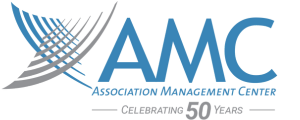
Want to Write Better Headlines? Here’s What Not to Do
In the first post of the How Can I Write Better Headlines series, I talked about things you SHOULD do to write great headlines for association audiences and beyond. Telling you what works is helpful, but you also need to know which headline errors to avoid. So, think of this as the “what not to do” in headline writing.
Don’t be long-winded. Short is sweet.
Write a headline that captures the essence of the story in as few words as possible. Then, shorten it. Really. Stop when the really short version conveys exactly what you want the reader to focus on, do, or take away. Look for low-hanging fruit to cut, like:
- redundancy (“is currently,” “future plans,” “end result,” “first founded,” “possible options”)
- using phrases where a single word will do (“in the event of” instead of “if,” “in the month of February” instead of “in February”)
Don’t undermine strong verbs.
“The Rainforest” is a good title for third-grade report. But adults’ headlines need verbs, and strong ones are best. But here are three things to watch out for:
- Avoid verbs that are more commonly used as nouns, because readers will likely read them as nouns and have to back up and re-read to get your meaning. “Association projects budget surplus” reads as a train of four nouns; it’ll take work for your reader to figure out that “projects” isn’t a noun but a verb. I once wrote a really unfortunate headline that used “ducks” as a verb but was read as a noun.
- A second verb may undermine your message. Adding “tries to,” “is meant to,” “hopes to,” or “helps to” before your verb often suggests that you meant to do something but couldn’t quite pull it off. “Candidates try to win board seats,” “Meeting is meant to inform attendees,” and “Association helps improve quality of care” all suggest their subjects fall short of the mark.
- Question present participles. If you’re pairing a present participle (verb ending in -ing) with an auxiliary verb (or “helping verb,” depending on your age), you’ve opted for a longer, weaker verb phrase. That means “Association Conducts Membership Survey” is better than “Association Is Conducting Membership Survey.” The shorter version ditches five characters and a space that weren’t contributing anything and eliminates a weaker verb while maintaining the exact same meaning.
Ambiguity stinks.
A headline that confuses people isn’t irresistible clickbait. It stokes annoyance and apathy about your story. Here are a few examples of phrases that would need to be clarified or replaced in headlines:
- “Makes an impact” and “affects” don’t say if the effect is positive or negative. Verbs like “improves” or “harms” are better.
- “Outstanding work” might be work that was completed really well or work that no one has done yet.
- An “outgoing board member” might be one whose term has ended or one that loves to meet new people.
Don’t serve alphabet soup.
Associations, especially healthcare ones, are awash in acronyms. There’s a wall of capped letters for association names, healthcare roles, research project names, government medical programs, and more.
I’ll give you this impossible scenario: If the Centers for Medicare & Medicaid Services approve a group of registered nurses’ investigational device exemption for a product known by its acronym, HED-LINE III, you could certainly write this headline: CMS OK’s RNs’ HED-LINE III IDE.
You can write that, but you shouldn’t. Please. Don’t. That’s cruel to your readers, even medical professionals who expect to consume alphabet soup in journal articles.
Watch for structural repetition.
Just as words can be redundant, headline structure can be redundant. Take a look at the headlines as a whole contained in one publication you offer, whether it’s a magazine or an e-newsletter. How many of them follow this structure: Association Name (Verb) (object)? Association conducts election. Association holds meeting. Association seeks survey input. … Vary it up a little. In fact, make more of those headlines about your membership!
Another commonly repeated structure is what I call “Cute: Serious.” Working with associations, I see a lot of headlines and poster titles structured with colons. There’s a short, cute headline, a colon, and an explanation. Think headlines like “Whose IV Line Is It Anyway?: Peripheral Line Insertion Responsibilities at One Major Medical Center” or “Masks, and Gowns, and Sanitizer, Oh My!: Ensuring PPE Supplies Meet Demand.” These are OK, but if every headline in a publication is structured this way, the repletion is noticeable and can be bothersome.
Don’t force it.
If a headline isn’t immediately obvious to you, don’t try to force yourself to come up with something brilliant. You can be too close to something you’ve written to give it a good headline. In that situation, you can:
- Give yourself a breather and try again after a break. When you return to your work and read it, the concise point should be obvious.
- Hand it off to an editor or colleague who can look at it objectively and boil it down to the key concept that needs to be in the headline.
If you recognized some of your own habits in this to-don’t list, you’re not alone. It’s important to remember your headline isn’t alone either.
The newspapers I worked at often referred to “points of entry” for readers, the elements that would draw a reader into the newspaper, page, and story. The headline was a great point of entry, but if it didn’t do the job, a photo or a pull quote might be the point of entry for a reader. Even a story that fails to draw a reader with its own headline and elements might have a really clever blurb written about it in an e-mail or table of contents, prompting a reader to commit to reading it. Your headline isn’t the only point of entry, so do try your best but don’t beat yourself up if you don’t kill it every time. There will be more headlines, and every headline is a new opportunity to improve your writing chops and to engage with your members.
Julie Rogers is a senior content marketing and editorial manager in the Creative Media Services department at AMC.
Be the first to know about the latest articles, news, and events from AMC. Sign up for our emails!


